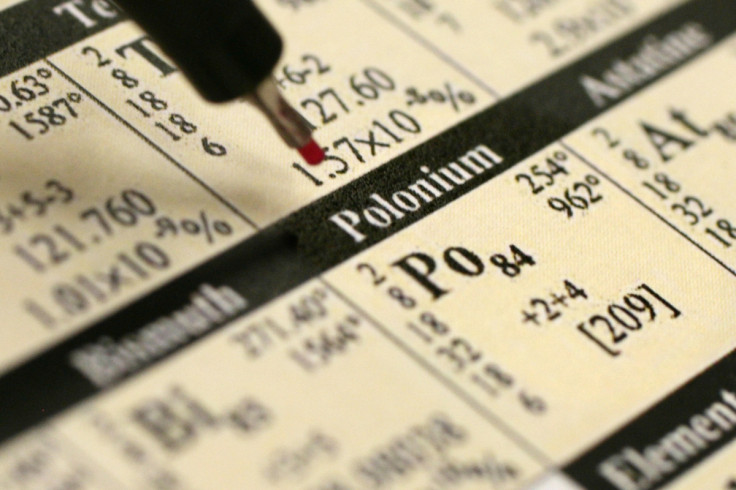Alexander Litvinenko inquiry: What is the isotope polonium-210 used to assassinate ex-KGB agent?

Polonium-210 has been at the centre of one of the most intriguing murder investigations on British soil since it was discovered to have been the poison of choice in the death of Alexander Litvinenko in 2006.
The discovery of the involvement of the rare radioactive isotope, made only at closed nuclear facilities controlled by Russia, pointed the finger of blame at the Russian state. On 21 January, an independent inquiry report into the poisoning of the former KGB agent and Russian dissident will be published in Britain, nearly a decade after his death.
What is polonium?
It is a naturally occurring radioactive material that emits extremely hazardous alpha particles. Polonium was first discovered by Marie and Pierre Curie in 1897. Polonium-210 is one of 25 radioactive isotopes of polonium. It decays to lead by alpha particle emission, with a half-life of 138 days.
There are very small amounts of polonium-210 in the soil, the atmosphere and tiny amounts of the substance in the human body. However, when ingested at high doses, polonium-210 is fatal and very difficult to identify. Just one microgram of polonium-210, which is no bigger than a speck of dust, would be enough to deliver a fatal dose of radiation.
What is polonium-210 used for?
Substantial amounts of Po-210 generate heat as the atoms decay. The isotope has been used in Russian lunar landers to warm the instruments on freezing nights.
Polonium-210 is used in manufacturing in devices that eliminate static. These devices are designed to meet tough safety standards and pose no threat to public health or safety. Small polonium-210 sources can also be used to check or calibrate instruments.
It is difficult to get hold of polonium-210 unless the individual has access to a nuclear facility. Only around 100g of the substance is manufactured in nuclear reactors around the world annually.
During the inquiry into Litvinenko's death, Norman Dombey, emeritus professor of theoretical physics at the University of Sussex, said the polonium used was produced at a closed nuclear facility in the Russian city of Sarov. He said its Soviet-era Avangard plant was the only place in the world with a polonium "production line".
Can it be transported?
Alpha particles can be stopped by paper, or glass vials, so polonium-210 could potentially be smuggled into the country without the smuggler succumbing to radiation poisoning. It has no colour or taste, so it can be added to food and drink without being detected.
Polonium-210 is difficult to detect in hospital tests and airport scanners because it does not emit a lot of gamma radiation, which is picked up by Geiger counters.
In what way is polonium-210 deadly?
As polonium has a biological half-life of around one month, its alpha particles continue to destroy the body once it has been ingested.
"Polonium is rapidly distributed around the body, leaving a trail of reactive radicals in its wake as it steals electrons from any molecule it encounters," the Royal Society of Chemistry reports. "Low-level DNA damage from radiation can cause genetic changes that affect cell replication, whereas more severe damage may force the cell to self destruct by apoptosis."
The death of Marie Curie's daughter, Irene Joliot-Curie, was linked to a laboratory accident in which a sealed capsule of polonium exploded. She died of leukaemia in 1956, more than 10 years after the incident took place.
© Copyright IBTimes 2025. All rights reserved.






















